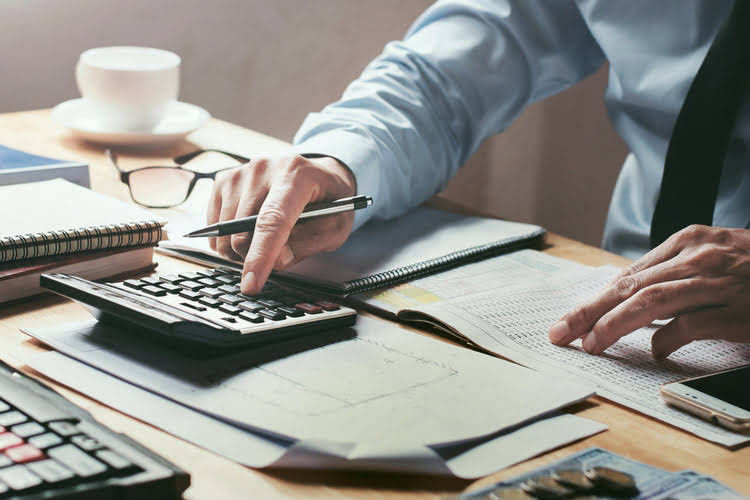
The depreciable base is the value that is divided by the service life of the asset. In this example, it’s $5 million, divided by, let’s say, 10 years that the building is estimated to be useful. The choice of depreciation method depends on several factors, including the nature of the business, the expected useful life of the asset, the salvage value, tax implications, and financial statement impact. It is essential to evaluate these factors carefully and select the method that best suits your business needs. However, there are also some disadvantages to the Double Declining Balance method. For example, it can be difficult to understand and calculate for those unfamiliar with Retail Accounting accounting principles.
Example of Double Declining Balance Depreciation

However, it’s important to ensure that the book value never drops below the salvage value—the estimated worth of the asset at the end of its useful life. Understanding the tools available double declining balance method for double declining balance depreciation can greatly enhance your financial management skills. By utilizing calculators, templates, and educational resources, you can make informed decisions that benefit your business. To manage partial-year depreciation, companies often employ the half-year convention. This approach assumes that all acquisitions and disposals occur midway through the fiscal year, allowing for half a year’s worth of depreciation to be recorded in the year of purchase. This convention provides a balanced method that reduces complexity while maintaining accuracy.
Double Declining Balance Method Formula
Double declining balance depreciation isn’t a tongue twister invented by bored IRS employees—it’s a smart way to save money up front on business expenses. Learn how to build, read, and use financial statements for your business so you can make more informed decisions. The carrying value of an asset decreases more quickly in its earlier years under the straight line depreciation compared to the double-declining method. Double-declining depreciation charges lesser depreciation in the later years of an asset’s life. In the last year of an asset’s useful life, we make the asset’s net book value equal to its salvage or residual value. This is to ensure that we do not depreciate an asset below the amount we can recover by selling it.

Double-Declining Balance (DDB) Depreciation Formula
Think of tech gadgets that seem to age in dog years, or heavy machinery that puts in the hard yards upfront; their book value should drop as quickly as their market value. This method also front-loads depreciation expenses, which can be a clever move for businesses looking to manage taxable income and cash flow in the earlier years of an asset’s life. The double declining balance (DDB) method is a widely recognized and utilized accelerated depreciation technique in accounting and finance. This approach allows businesses to depreciate assets more rapidly during the initial years of their useful life, resulting in higher depreciation costs earlier on. Choosing the right depreciation method is essential for accurate financial reporting and strategic tax planning. The double declining balance method offers faster depreciation, suitable for assets that lose value quickly, while the straight line method spreads costs evenly over the asset’s useful life.
Method 3 – Using VDB Function or Variable Declining Balance Function in Excel

Under a 40% DDB depreciation rate, the book value of the same asset two years later would only be $40,320. This article will serve as a guide to understanding the DDB depreciation method by explaining how it works, why it can be beneficial, and its potential downsides. They have estimated the machine’s useful life to be eight years, with a salvage value of $ 11,000. TVM asserts that the value of money decreases over time due to factors such as inflation, making a dollar today worth more than a dollar in the future. Therefore, deferring tax payments to later years can lead to cost savings for the company.
- Our Financial Close Software is designed to create detailed month-end close plans with specific close tasks that can be assigned to various accounting professionals, reducing the month-end close time by 30%.
- While the DDB method does not directly impact cash flow, the lower taxable income in the early years can result in lower tax liabilities, effectively improving the company’s cash position.
- For the second year of depreciation, you’ll be plugging a book value of $18,000 into the formula, rather than one of $30,000.
- The beginning of period (BoP) book value of the PP&E for Year 1 is linked to our purchase cost cell, i.e.
- Certain fixed assets are most useful during their initial years and then wane in productivity over time, so the asset’s utility is consumed at a more rapid rate during the earlier phases of its useful life.
Asset Value and Profitability
- Under Straight Line Depreciation, we first subtracted the salvage value before figuring depreciation.
- The method’s accelerated depreciation schedule results in varying effects on income statements, balance sheets, and cash flow statements.
- This can result in businesses saving money upfront on asset-related expenses and using those savings to invest in other aspects of their operations.
- The book value should not fall below the asset’s salvage value, the estimated residual value at the end of its useful life.
- Assume that you’ve purchased a $100,000 asset that will be worth $10,000 at the end of its useful life.
- Eric Gerard Ruiz, a licensed CPA in the Philippines, specializes in financial accounting and reporting (IFRS), managerial accounting, and cost accounting.
For assets that chug along at a steady pace, this method’s rapid depreciation doesn’t quite match their even usage, potentially misleading the picture of an asset’s efficiency. Also, it tends to skew profit reports, showing lower profits earlier on because of higher depreciation charges, which could be a red flag for potential investors scanning through your financial health. This approach mirrors CARES Act the reality of many assets that lose their zest faster at the beginning of their life.

Consolidation & Reporting
This approach is particularly effective for assets like vehicles, computers, or machinery that experience higher usage or faster obsolescence soon after purchase. In summary, the Double Declining Balance depreciation method is a useful way to account for the value loss of an asset over time. This method allows businesses to write off more of an asset’s cost in the early years, which can help reduce taxable income during those years.